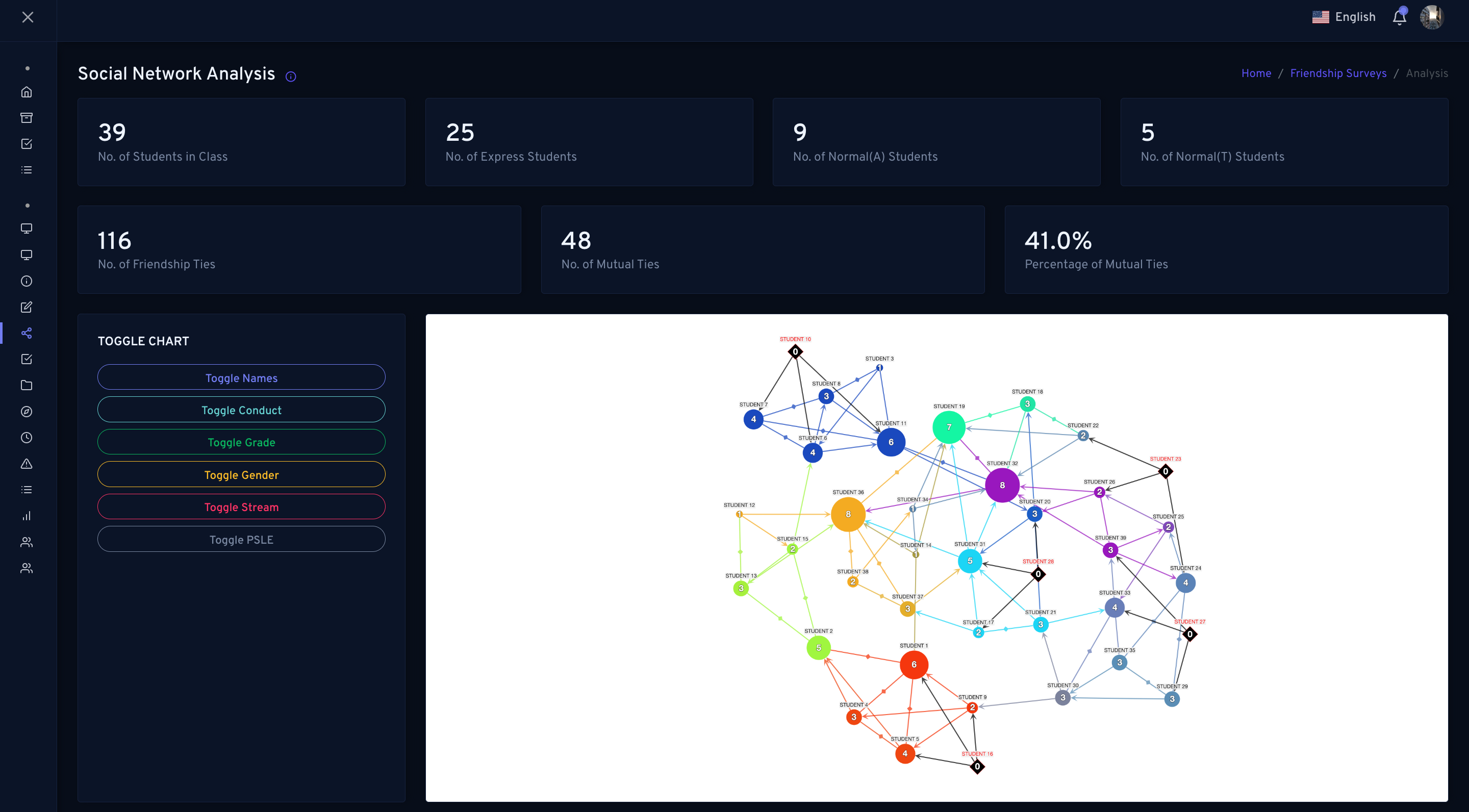Identifying Key Student Influencers with Social Network Analysis

In today’s dynamic educational landscape, understanding the social dynamics within the classroom can be just as crucial as the curriculum itself. Our Social Network Analysis (SNA) tool in Nurture offers a powerful resource for educators, enabling them to map and analyse the relationships and interactions among students. One of the most impactful applications of SNA in education is the identification of key influencers—students who hold significant sway over their peers. By recognising and leveraging these influencers, educators can foster positive behaviours and enhance overall student engagement.
What is Social Network Analysis (SNA)?
Social Network Analysis is a method used to study the relationships and structures within a network. In the context of a classroom, it involves examining how students interact with each other—who they talk to, collaborate with, and look up to. This analysis can reveal patterns and clusters within the classroom, identifying not just isolated interactions but the overall social fabric of the student community.
Why Focus on Key Influencers?
Key influencers in a classroom are those students who have a considerable impact on their peers. They are often the ones who others turn to for help, advice, or approval. Identifying these students is vital for several reasons:
- Promoting Positive Behaviours: Influencers can set trends within the classroom. If they exhibit positive behaviours, such as participation, cooperation, and respect, their peers are likely to follow suit.
- Enhancing Engagement: Engaged influencers can motivate their peers to participate more actively in class activities. This can lead to a more vibrant and interactive learning environment.
- Facilitating Peer Learning: Influencers can act as informal leaders in group activities, helping to guide discussions and keep their peers on track.
How to Identify Key Influencers Using SNA
The process of identifying key influencers through SNA in Nurture involves several steps:
- Data Collection: Gather data on student interactions. This can be done through our friendship surveys where teachers can pose questions that might include who the students’ top three friends are and the strength of their friendships, classmates they prefer to work with, who they seek help from, and more.
- Network Mapping: Use the collected data to create a visual representation of the classroom’s social network. This map, often depicted as a graph, shows students as nodes and their interactions as edges connecting these nodes.
- Centrality Measures: Analyse the network using centrality measures to identify key influencers.

Social Network Analysis (SNA) Sociogram
Common centrality metrics include:
- Degree Centrality: The number of direct connections a student has.
- Betweenness Centrality: The extent to which a student lies on the shortest path between other students, indicating their role as a bridge or connector.
- Closeness Centrality: How quickly a student can reach all other students in the network, indicating their overall influence.
- Identifying Clusters: Look for clusters or groups within the network. Influencers often emerge as central figures within these clusters.
Leveraging Influencers to Enhance Engagement
Once key influencers are identified, educators can adopt several strategies to leverage their influence positively:
- Empower Influencers: Give influencers roles that align with their strengths. For instance, appoint them as group leaders in collaborative projects or peer mentors for struggling students.
- Promote Positive Behaviours: Encourage influencers to model positive behaviours. Recognise and reward their contributions to create a ripple effect of positive behaviour throughout the classroom.
- Foster Inclusive Practices: Ensure influencers help in promoting inclusivity by engaging with less-connected peers. This can help integrate isolated students into the classroom community, fostering a more inclusive environment.
- Engage Influencers in Feedback: Involve key influencers in feedback sessions to understand the classroom dynamics better. Their insights can provide valuable information on how to improve engagement and address issues.
- Monitor and Support: Continuously monitor the social network and provide support to influencers. Their role can sometimes be overwhelming, and they might need guidance to use their influence effectively.
Conclusion
Identifying and leveraging key influencers through Social Network Analysis can significantly enhance student engagement and promote a positive classroom environment. By understanding the social dynamics at play, educators can create strategies that not only address academic needs but also foster a supportive and interactive learning community. Embracing SNA in the classroom paves the way for more effective and inclusive education, ultimately benefiting all students.



